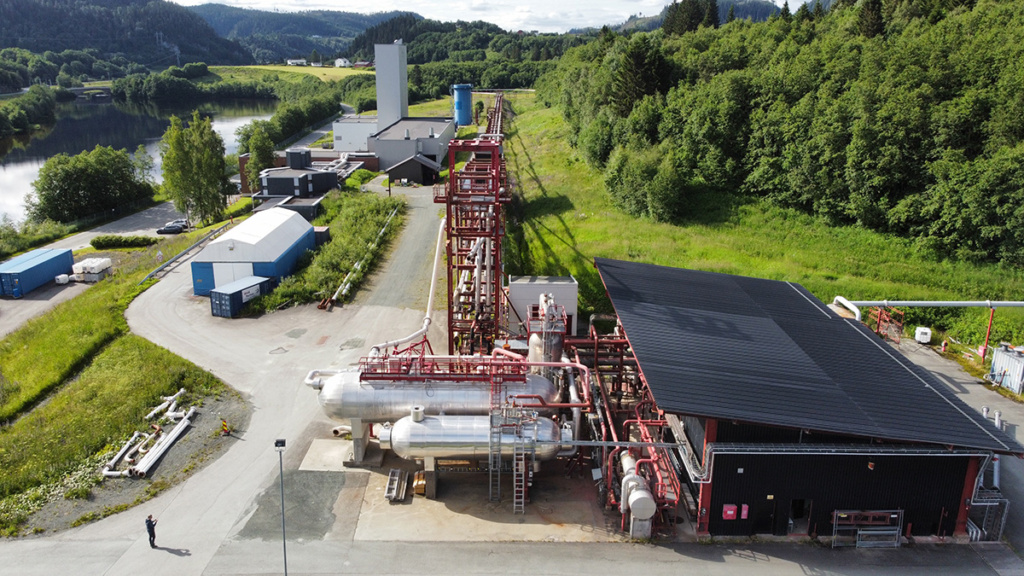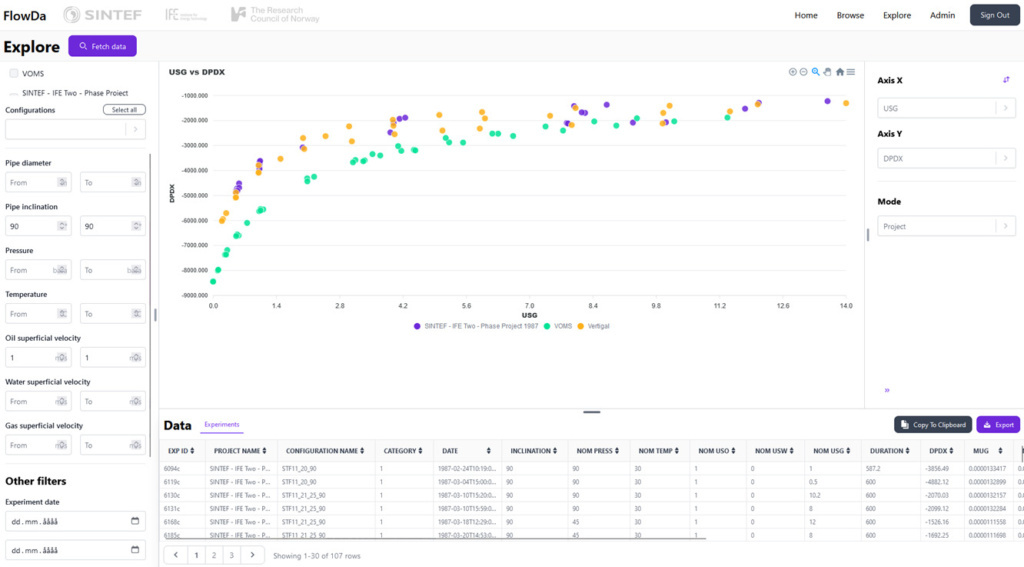By harnessing the power of data, FlowDa is set to drive innovation and efficiency in fluid dynamics, ultimately contributing to a more sustainable future.
As a groundbreaking development for fluid dynamics, the Norwegian Research Infrastructure for Multiphase Flows (IMF) has launched FlowDa, a comprehensive multiphase flow database created by SINTEF and the Institute for Energy Technology (IFE). The innovative platform aims to revolutionize how researchers and industry professionals access and utilize multiphase flow data, paving the way for advancements in various sectors, including oil and gas and carbon capture, transport and storage (CCS).
The FlowDa platform will serve as a comprehensive repository for datasets derived from pioneering multiphase flow experiments. By facilitating open access to these datasets, FlowDa aims to enhance the understanding of complex fluid behaviors, which is crucial for various industries, including oil and gas, chemical processing, and environmental engineering.
A Legacy of Excellence – The foundation for Norway’s most profitable invention
For over 40 years, IFE and SINTEF have been at the forefront of multiphase flow research. Their collaboration has produced some of the most extensive and high-quality and industrial-scale datasets in the field, addressing critical industry challenges. From optimizing offshore oil and gas projects to developing efficient transport methods for multiphase flows, their work has significantly impacted the industry, saving billions of dollars globally.

A Comprehensive Data Structure
SINTEF and IFE have made available multiphase experiments in straight circular pipes through FlowDa. These experiments are characterized by flow velocities, nominal pressure and temperature, geometrical parameters and fluid properties. These parameters are key elements for the realization of each experiment and strongly influence the outcome of it. Some typical results and observations are the pressure gradient through the pipe or the liquid hold-up. Through a very simple filtering based on the user selection, it is possible to focus the exported data to the user heart content.

In FlowDa, researchers and industry professionals can access selected datasets using the “Explore” tool (see screenshot of FlowDa over). This tool enables selection and filtering (left panel), visualization (central plot), and exploration of individual rows (bottom section). This is a powerful feature that allows users to narrow down their search, focus on relevant data points, and efficiently direct their research efforts.
The displayed visualization can be customized in terms of x-axis (here the gas superficial velocity is plotted), y-axis (here the pressure drop) and using different coloring modes, such as by projects (as shown in the picture) or by other relevant quantities, including superficial velocities, pipe diameter etc.
The Importance of Data Sharing
Through FlowDa, SINTEF and IFE vow to share their public data openly, gathered throughout the years, built on open projects. These data, recorded in the last 40 years, have been reorganized, removing them from their storage shelf and re-structured for an ever more user-friendly experience.
The launch of FlowDa is not just about data collection; it’s about accessing past innovation and fostering future collaboration and innovation. By making decades of research data accessible, FlowDa empowers researchers to make smarter decisions and enhances the efficiency of multiphase flow technologies. Better data utilization can lead to greater efficiency and smarter decisions. This is particularly crucial in the oil and gas sector, where massive amounts of data are generated and must be effectively harnessed.
Environmental Impact
One of the standout features of multiphase flow technology is its potential to reduce environmental impact. By optimizing designs and minimizing infrastructure, this technology can significantly lower greenhouse gas emissions. For instance, saving a ton of steel during construction can prevent nearly two tons of CO₂ emissions. This balance between industrial needs and environmental responsibility is a key focus for the teams at IFE and SINTEF.
FlowDa, your brand-new tool to access world-class multiphase flow assurance data!
Looking Ahead
FlowDa is designed to be a living database, continuously expanding as new datasets are added. Currently, selected datasets are available for public access, with plans to include more in the future. The platform also aims to allow external institutions and companies to contribute their curated datasets, fostering a collaborative research environment.
As the energy landscape evolves, the expertise developed through multiphase flow research will be crucial in addressing the energy trilemma: sustainability, reliability, and affordability. The knowledge gained from decades of research is now being applied to emerging fields like carbon capture and storage (CCS), hydrogen production, phase change materials and geothermal energy. In addition, FlowDa is an extremely valuable tool to be used for training and education of the next generation of flow experts.
The FlowDa development was financed as a Infrastructure project by the Norwegian Research Council (number 322683).
















Comments
No comments yet. Be the first to comment!